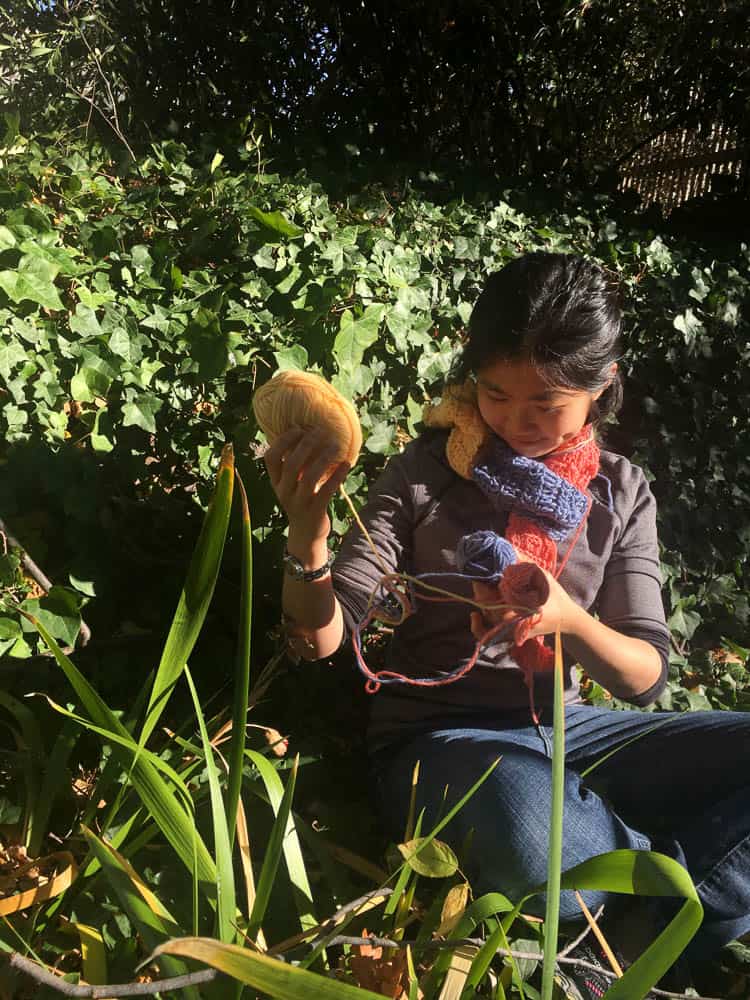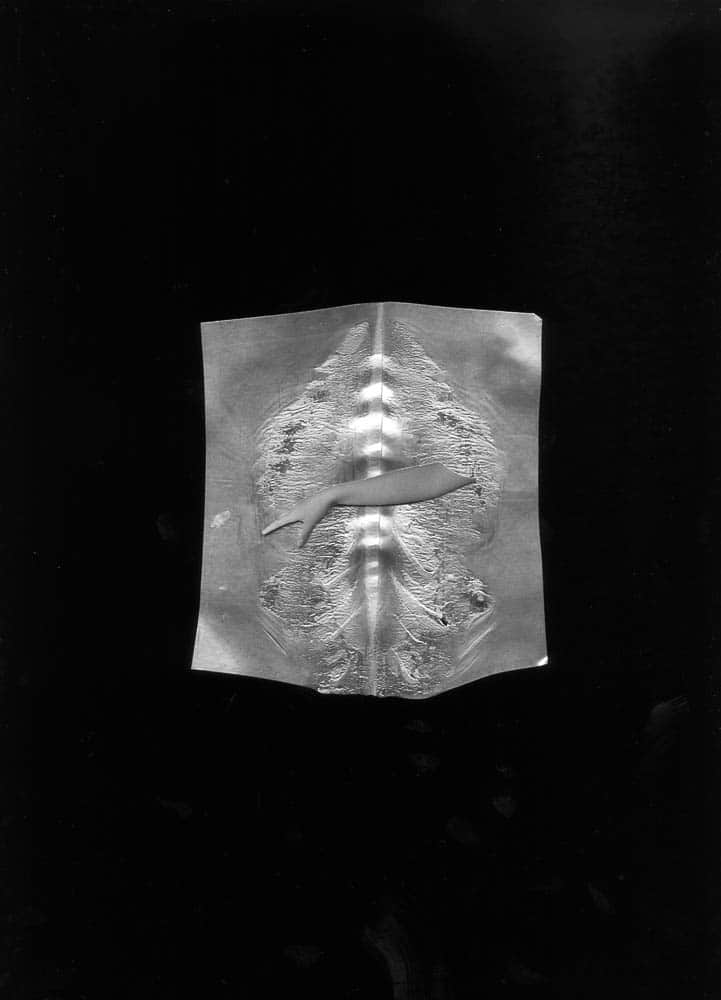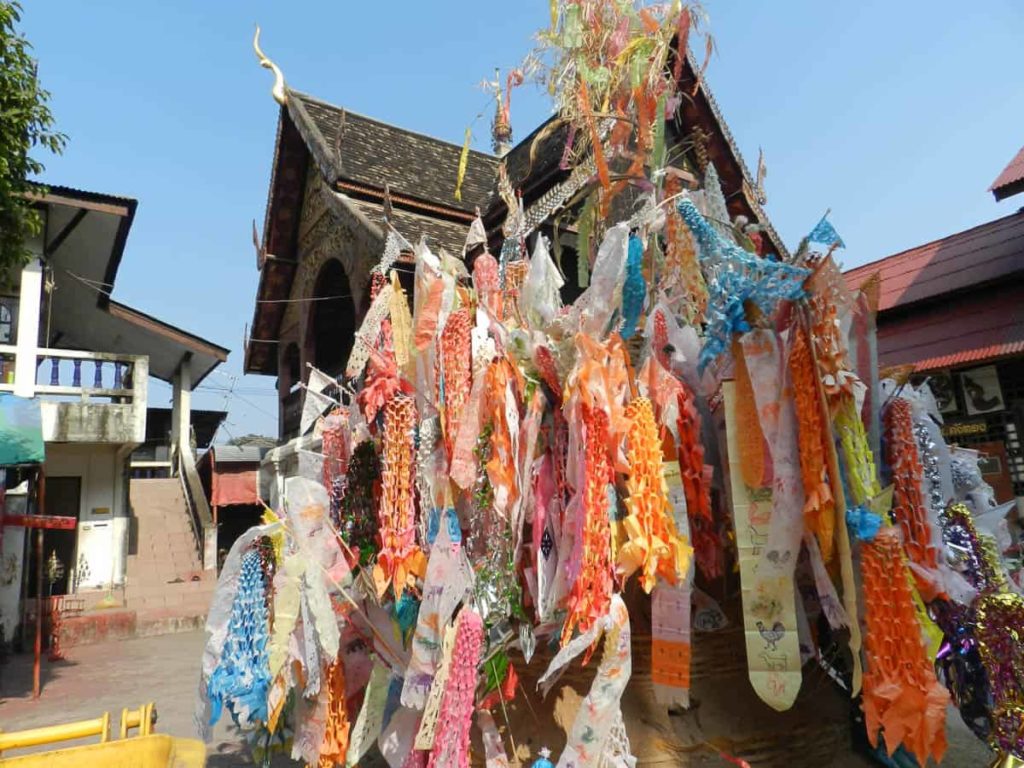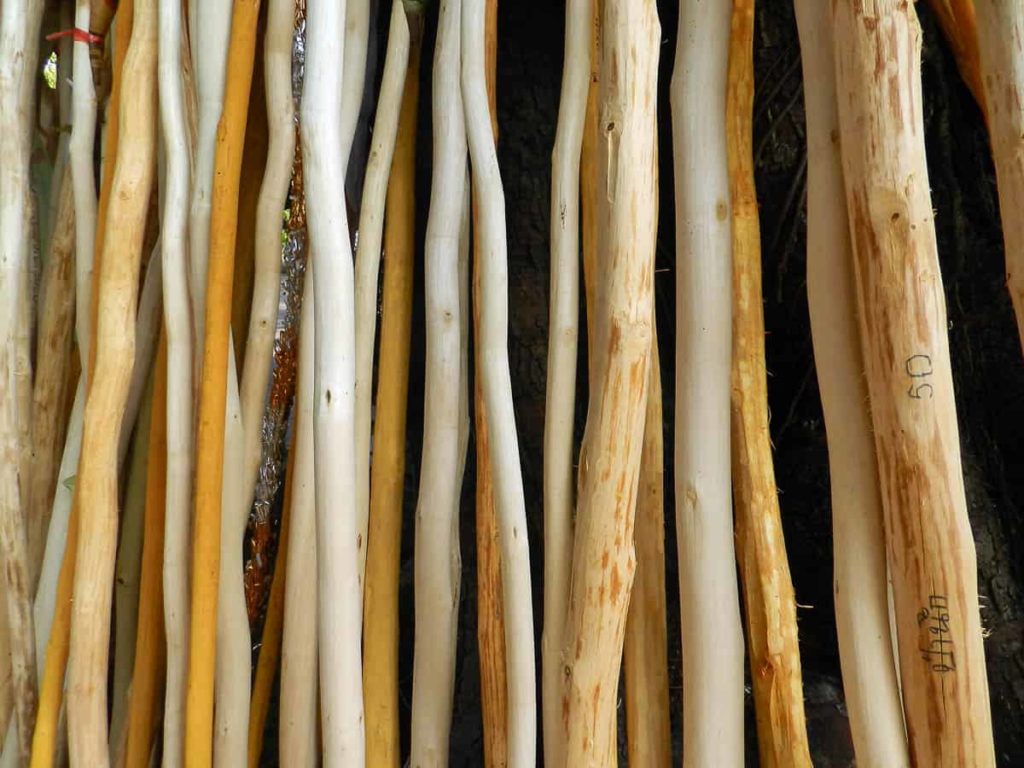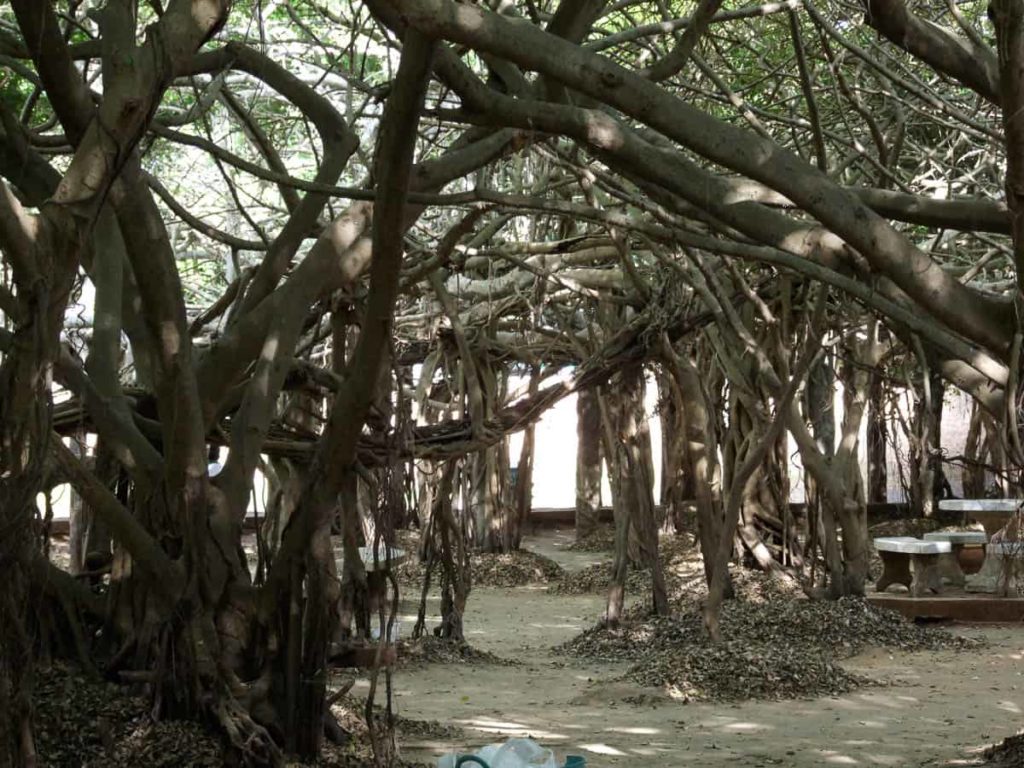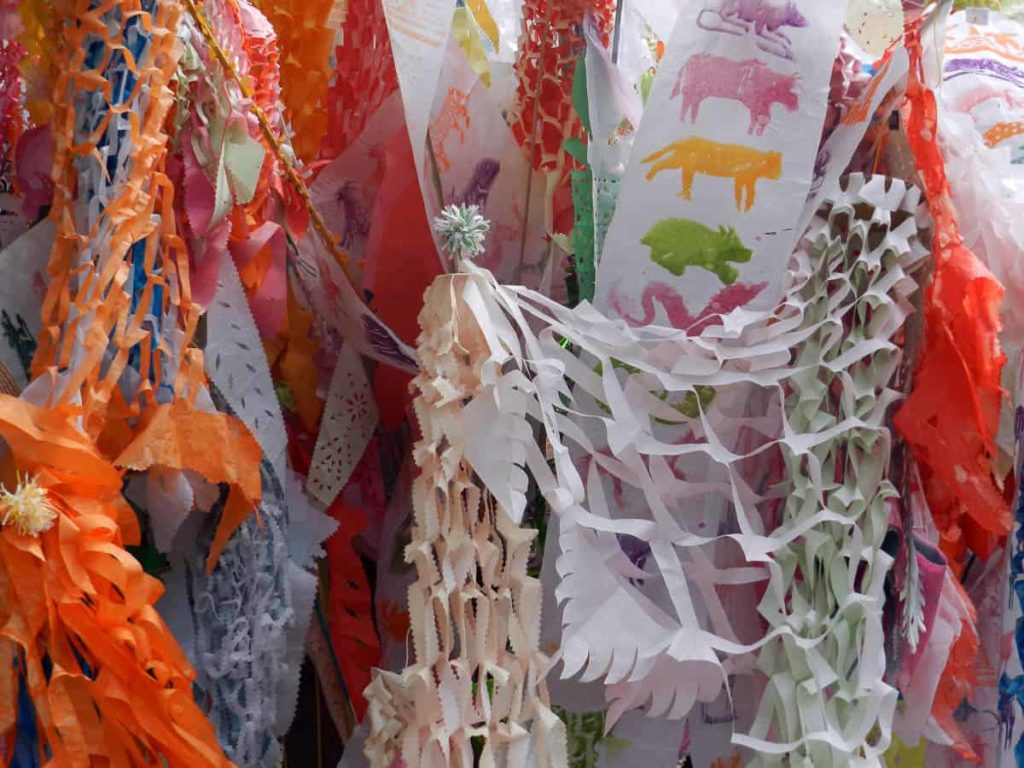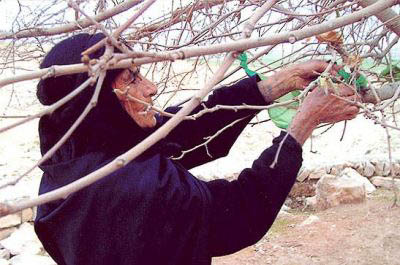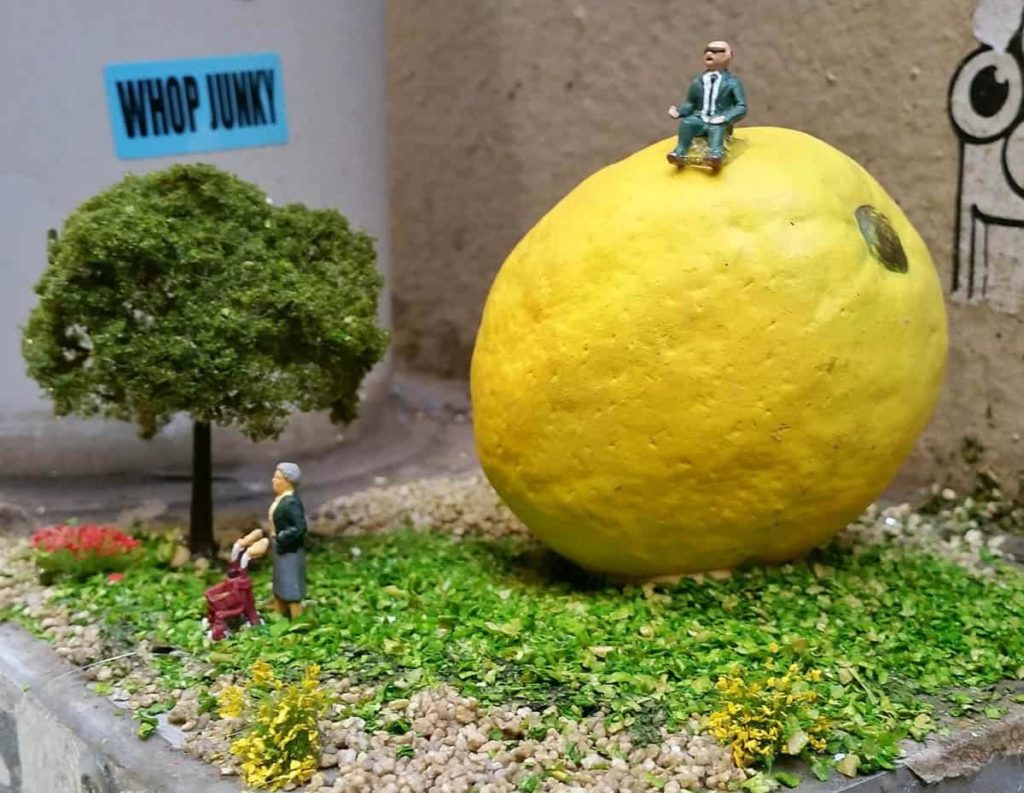Below are works that have been made for recipients beyond our human world. This can include ancestors, creatures, nature, god or the ephemeral.
Ba An Le | Fatemeh Barg | Helen O’Shea | Judith-Rose Thomas | Kate Campbell-Pope | Tinky | Louis Katz | Mark Yates | Nannette Shaw | Pennie Jagiello | Rebecca Chernow | Sally Simpson | Samar Ziadeh | Tammy Hulbert | Zhiping Li
Tammy Wong Hulbert
- Tammy Wong Hulbert (in collaboration with the St Andrews Community), The Anonymous Sojourners in the Australian Bush (installed at Wadambuk, St Andrews), 2017, wood, silk, paper, LED lights, 80 x 40 x 25cm, photo: Shane Hulbert
- Tammy Wong Hulbert (in collaboration with the St Andrews Community), The Anonymous Sojourners in the Australian Bush, 2017, wood, silk, paper, LED lights, 80 x 40 x 25cm, photo: Tammy Wong Hulbert
Made by Tammy Wong Hulbert in collaboration with the St Andrews Community at St Andrews, Victoria
The Anonymous Sojourners in the Australian Bush was an offering made to the Chinese mining community buried in Queenstown Cemetery, St Andrews in the 1850s. It is an uncommonly known local history, which I read as a hungry ancestral ghost of the community. Early Chinese migrants to Australia were often referred to as sojourners, as they intended to return home. The work was produced collaboratively by the St Andrews Men’s Shed and I, with support from the St Andrews Historical Society. The work cares for and retells the Chinese miner’s story of displacement, through the symbolic return of the community by building a series of eight boat lanterns to honour their contribution to St Andrews and resolve their dilemma. The full moon on the side of the boats represents the idea of “missing home and family”, as suggested by the great Tang dynasty poet Li Bai (701-762 BC) in On a Tranquil Night. In 2017, when the work was being made, the Victorian Government apologised to descendants of Chinese miners of the Gold Rush era for discriminatory policies, which led to these historical narratives becoming obscure. The work was commissioned as part of the Living in the Landscape Public Art Incubator, supported by Nillumbik Shire.
www.tammywonghulbert.com/anonymous-sojourners
#tammywonghulbert #anonymoussojourners #nillumbikartsincubator #standrewsmensshed
Sally Simpson
- Sally Simpson, Artefact for the Anthropocene:Roadside Memorial, 2018, waxed bones, thread, copper and stone, 70x28x14cm, photo: Dorian Photographics
- Sally Simpson, Artefact for the Anthropocene:Roadside Memorial, 2018, waxed bones, thread, copper and stone, 70x28x14cm, photo: Dorian Photographics
- Sally Simpson, Artefact for the Anthropocene:Roadside Memorial, 2018, waxed bones, thread, copper and stone, 70x28x14cm, photo: Dorian Photographics
Wamboin NSW
This personal ritual object honours the lives of native and introduced species which often end prematurely on the roads around Canberra. The processes of collecting, cleaning and preserving the bones in wax express my concern for the complex balance between humans and our environment.
Instagram: @sallysimpsonart
Kate Campbell-Pope
- Kate Campbell-Pope, ‘Transcendence’, 2014; Floristry wire, emu feathers, thread; 27 x 17 x 17cm, photo: Eva Fernandez
- Kate Campbell-Pope, ‘Transcendence’, 2014; Floristry wire, emu feathers, thread; 27 x 17 x 17cm, photo: Eva Fernandez
Fremantle WA
This work (the prototype for a series of 3 vessels made for the Tamworth Textile Triennial exhibition ‘Group Exchange’) was completed soon after the sudden loss of my sister in 2013, and relates to the form of a funerary urn.
Instagram: @katecampbellpope
Mark Yates
- Mark Yates, Sealed Apology, 2018, Baltic Pine, Paper, 150mm X 68mm X 42mm, photo: Mark Yates
- Mark Yates, Sealed Apology, 2018, Baltic Pine, Paper, 150mm X 68mm X 42mm, photo: Mark Yates
Bellerive, Hobart
An offering of an apology, the box offers vulnerability and surrenders control to the receiver, allowing them to decide how and when they wish to engage with the offered apology.
Instagram: @mark_yates_
Black Matter

Julie Gough, Francisca Moenne, Robert O’Connor, Untitled, 2016-2018, felt-tip pen and Magellan beech wood dust on canvas, 170 x 300 cm: Simon Cuthbert
Made by Julie Gough, Francisca Moenne, Robert O’Connor and various authors from Santiago, Chiloé and Isla Navarino in Chile
This canvas cartographically exposes and creates multiple strategies and systems for building social and cultural bridges across the Pacific Ocean and between Tasmania and Chile .
Instagram: @blackmatterproject1
Judith-Rose Thomas


This painting is inspired by a petroglyph. One is a linear view of a petroglyph on MDF board that looks like two people with children. The other painting separates those figures and gives them colour.
Judith-Rose was born in Launceston of Aboriginal Parents and has resided in Launceston most of her life and was the first Tasmanian Aboriginal Artist for many Government projects in Hobart and Launceston. Her art pieces have been placed in major galleries and exhibitions around the State of Tasmania, and purchased by various Government Departments: Department of Foreign Affairs, Rosny Service Tasmania, Department of Employment and Work Relation, Claremont High School and Department of Aboriginal Education and Training also placed in Private Art Collections around Australia, India, England, Europe, Japan and America including National Museum of Australia. She graduated from the University of Tasmania with a Master’s Degree in 2004.
Judith-Rose has Tutored at the University of Tasmania at the Riawunna section for Aboriginal Higher Education, and has been selected to become a member of the Aboriginal Arts Advisory Group of the Tasmanian Arts Advisory Board for the Government. Being actively involved in Education her communication skills had improved to the extent it enabled her to participate in The Tasmania Talkabout forum at the Queen Victoria Museum and Art Gallery, and curatorial sessions at the Utas Arts Academy Launceston.
It is through her Artwork Judith-Rose had the opportunity to give, with donations of artwork to raise money for those less fortunate, such as the Blind Society and the Make a Wish Foundation. Judith-Rose shares her expertise with the elderly by volunteering at Homes and Hospices in the Launceston area, her way of giving back to society.
Nannette Shaw
Nannette Shaw has gifted many of these baskets to organisations across Tasmania, including the Governor of Tasmania Professor Kate Warner, the Premier of Tasmania, Will Hodgman, Queen Victoria Museum and Art Gallery Launceston, Baluk Arts Mornington Peninsular Victoria, Riawunna University of Tasmania, Launceston, Tasmanian Aboriginal Corporation, Preminghana North-West Tasmania, Flinders Island Aboriginal Association Incorporated (FIAAI), Bunurong Land Council, Frankston Victoria.
Nannette Shaw is a Tyereetore Elder from Tasmania who also has ties to the Boonwunurong people of Southern Victoria. Nannette creates traditional Bull Kelp vessels in the same way the Ancestral women of Tasmania did for thousands of years. Presented her work at the Darwin Aboriginal Art Fair, Tarnanthi Art fair in Adelaide, Black Arts Market in Sydney and has just become a finalist in the Telstra Art Award in Darwin. Nannette was also featured in Kanalaritja: An Unbroken String at the Tasmanian Museum and Art Gallery. Tayenebe at TMAG and toured Australia for two years. Works in America, Europe and around Australia in private collections.
Zhiping Li (Avon)
- Avon, Present to Past, 2018, wool, 135x18x12cm
- Avon, Present to Past, 2018, wool, 135x18x12cm
Tasmania, South Hobart
An offering to the past, this scarf is a passing on from my current self to the younger me, an offering to all the fears and negativities that should have been long gone. Since forgetfulness is not an effective remedy, why not find a way to make peace with them?
Instagram: @cottoneduskk
Bella Dower
- Bella Dower, The Weight of Memory, 2018, 116.7×101.1×1.2mm, photo: Bella Dower
- Bella Dower, The Weight of Memory, 2018, 116.7×101.1×1.2mm, photo: Bella Dower
Hobart, Tasmania
An offering of weight to a weightless entity is balanced on the body, provoking contemplation to our relationship with individual and collective memory as an elusive, intangible subject.
Instagram: @bvvlla
Pennie Jagiello
- Pennie Jagiello, ‘Down the barrel’,2015, neckpiece, carved black plastic tube, plastic fencing, fishing line, found materials collected on Victorian and New South Wales beaches. Image by Ruby Aitchison 52x15x6.5cm
- Pennie Jagiello, ‘Down the barrel’,2015, neckpiece, carved black plastic tube, plastic fencing, fishing line, found materials collected on Victorian and New South Wales beaches. Image by Ruby Aitchison 52x15x6.5cm
Made in Melbourne, 2015
Down the barrel is one of the pieces I made during the completion of my MFA titled Remains to be seen, worn and heard. An inquiry into anthropogenic debris investigated through contemporary jewellery objects. This work is from the era of the anthropocene. It is a discarded talisman that becomes an expended heirloom we present to and for generations to come. It is one of the many that as part of my ongoing research reflects what we leave behind existing long after we are gone. From the concluding statement of my exegesis, “Diamonds are forever, so is anthropogenic debris”.
www.facebook.com/pennie.jagiello
Instagram: @penniejagiello
Ba An Le
- Ba An Le, Bamboo Garden, 2018, bamboo, silk, gilt gold, brass, 13 x 2.5 x 2.8 cm, photo: Ba An Le
- Ba An Le, Bamboo Garden, 2018, bamboo, silk, gilt gold, brass, 13 x 2.5 x 2.8 cm, photo: Ba An Le
Sydney, Australia
In my backyard lies a bamboo garden, whereof a young age I weaved through the curtains without fear of creatures that might latch onto my small frame; and presently of an older age, an incessant fear of jutting spears that may elongate and bend where shadows creep. I seem much more like a child now than I do when I was younger. The garden is the same as it was in the past, but I can no longer see the depths for my body makes no attempt to stand at its gate. There is no need of sacrifice, offering, or of any of the things that are seen or made by my hands, the bamboo garden is.
Instagram: @baan_le
Louis Katz
- Louis Katz, Anonymous Group. 2008, mixed media
- Louis Katz, Anonymous Group. 2008, mixed media
- Louis Katz, Anonymous Group. 2008, mixed media
- Louis Katz, Anonymous Group. 2008, mixed media
- Louis Katz, Anonymous Group. 2008, mixed media
- Louis Katz, Anonymous Group. 2008, mixed media
- Louis Katz, Anonymous Group. 2008, mixed media
- Louis Katz, Anonymous Group. 2008, mixed media
- Louis Katz, Anonymous Group. 2008, mixed media
- Louis Katz, Anonymous Group. 2008, mixed media
Made by unknown in Chiangmai, Thailand
In the image in you see black stole of stripe. This stripe is created by two techniques including weaving and dyeing. We inherited this tradition of the beautiful art of weaving, colours combinations, designs from our ancestors. Who taught me my traditional weaving craft and give me a strong sense of weaving. Now it’s my responsibility to pass it on to the next generation.
Fatemeh Salehi Joshaghani
- Fatemeh Salehi Joshghani, Wish tree, 2017, wood, textile, copper, 22 x 30
- Fatemeh Salehi Joshghani, Wish tree, 2017, wood, textile, copper, 22 x 30
- Fatemeh Salehi Joshghani, Wish tree, 2017, wood, textile, copper, 22 x 30 Fatemeh Salehi Joshaghani. Other World, brass, textile, 5 x 9″
Ancient Iranians tied colourful strings up to trees branches, which are symbols of lives, for their hopes coming true. This piece is made with inspiration of wishing tree.
In Iranian Painting, the artist aim is representing the other world and reaching paradise. This piece is impressed with Iranian painting
Instagram: @barg.j
Tinky
- Tinky, ‘After things turned sour and Marj ended their relationship George felt he’s lost his zest for life – it was time he found a new squeeze, 2018, ceramic lemon, miniature figurines, faux grass, 20cmx20cm15cm, photo: liz sonntag
- Tinky, Someone’s Walking on Eggshells, 2016, eggshells, miniature figurines, faux grass, 10cmx20cmx15cm, photo: Liz Sonntag
The work was created in a laneway named Presgrave Place, Melbourne.
The installation was set in a historic Melbourne laneway – a hidden but public space – to provide a moment of joy for those who discover it.
The work was installed in Presgrave Place, a small heritage-listed laneway in the heart of Melbourne. The installation deliberately has a comedic undertone in terms of size (real vs miniature) and punny caption. It was made to provide moments of joy for passers-by in the street.
Instagram: @tinkysonntag
Rebecca Chernow
- Rebecca hernow, Mycelium Power, 2014, coffee grounds + oyster mushroom mycelium, 12 x 8 x 1 cm, photo: R. Chernow
- Rebecca Chernow, Mycelium Power (fruiting) oyster mushroom (Pleurotus ostreatus), photo: R. Chernow
Seattle, WA
The work was made by packing spent coffee grounds mixed with oyster mushroom (Pleurotus ostreatus) mycelium into a food-safe silicone mould of a power outlet. The sculpture was then buried at the base of a tree where raw sewage had been dumped. The oyster mushroom has been proven to have bio-remediating qualities, which means it can help break down toxins in the soil and has the potential to benefit the organisms that grow there. After a few weeks and some rain, the oyster mushrooms “fruited” and the “sculpture” disappeared.
Instagram: @beccaboflecca
Helen O’Shea
- Helen O’Shea, Floating Blue Elaboration, 2017, recycled plastic bags, threads, h 27 x w 23 x d 20 cms, photo: Roseanne Lynch
- Helen O’Shea, Floating Blue Elaboration, 2017, recycled plastic bags, threads, h 27 x w 23 x d 20 cms, photo: Roseanne Lynch
- Helen O’Shea, Marine Beings, 2017, Found Plastic bottles and thread, 12 x 10 x 8 cms, Photo: Roseanne Lynch
Cork, Ireland
The beginning of our future reality is building deep in the oceans, amongst the discarded plastics of our generation. With the revelation of colonies of microorganisms growing in the gyres of plastic, I wonder what this underwater environment is evolving into.
Instagram: @helenosheais
Vankar Bhimji Kanji And His Unit’s Men And Woman

Vankar Bhimji Kanji, Traditional kutchi hand woven tussar silk stripe & boota stole, 2017, tussar silk / pure fine wool, 24 x 82 inches
Kutch Region, Gujarat, India
These stoles are made on pitloom (our traditional loom made from wood). Stripe & boota stoles in many rich textured distinctive motifs are used in these stoles. These stoles in used tussar silk yarn in weft and warp in pure fine wool. Tussar silk is known for it’s original rich deep gold colour. Tussar silk always gives shine in my products. These stoles are made on my theme ”traditional with innovative twist”. And concept ”tree of life” in these stoles in many traditional motifs used. Such as jal(tree), dhulki, dhunglo(represent mountain), saat kanni, taakki’s, chad’s, landhar(snake flowing), etc. These stoles are known for their jal motifs & boota motifs of dhulki & dhunglo.
Samar Ziadeh
Beirut
Through the word Alhamdullilah (Thank you God) Arabic and Islamic people express their gratitude to God who proclaimed in the Holy Quran: “If you give thanks I will grant you increase” that’s why the word Alhamdullilah was always shown in Arabic monuments, utensils, and jewellery. As an Arabic artist and according to this tradition and belief, I made a pendant where I engraved Alhamdullilah using the Diwani script style.












